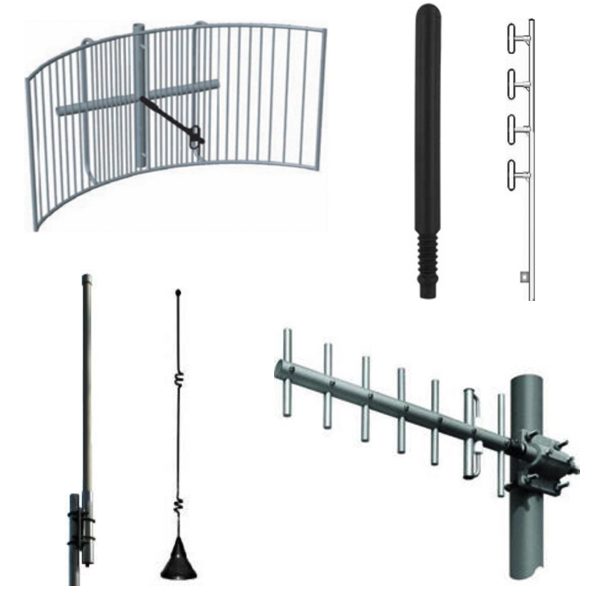Industrial & Commercial Antennas

RSP Supply carries a full line of industrial and commercial antennas designed for reliable, high-performance communication across demanding industrial and commercial environments. Built for durability and nonstop operation, these antennas are used in industries such as telecommunications, transportation, manufacturing, logistics, and utilities. They provide dependable connections between devices, systems, and control networks where stable wireless communication is critical.
Industrial antennas come in many designs to meet different application requirements. Omnidirectional antennas transmit and receive signals equally in all directions, creating broad coverage ideal for areas that require full, consistent signal availability. Yagi antennas, on the other hand, are directional antennas known for their high gain and signal strength, making them ideal for point-to-point communication or long-range applications where precision and focused coverage are needed.
Some advanced antenna models feature Multiple Input Multiple Output (MIMO) technology, which enhances signal reliability and throughput by using multiple transmission and reception paths. This makes them particularly effective in environments where interference, obstacles, or reflections could degrade signal quality. With rugged housings, corrosion-resistant materials, and industrial-grade connectors, RSP Supply’s antennas are engineered to perform in challenging conditions indoors and outdoors.
FAQs
Q: What types of industrial antennas are available?
Industrial antennas include Yagi, Omni, Dipole, Whip, and Cellular models, each suited for specific communication needs such as long-range, 360-degree, or mobile connectivity.
Q: What is the frequency range and frequency band of GPS antennas?
GPS antennas typically operate in the L1 band at 1.57542 GHz and the L2 band at 1.2276 GHz, providing precise satellite positioning and navigation signals.
Q: Are industrial antennas weather-resistant?
Yes. Most industrial and commercial antennas are built with rugged materials and sealed housings, ensuring resistance to moisture, corrosion, and temperature extremes.
Q: What is MIMO technology in antennas?
MIMO (Multiple Input Multiple Output) technology uses multiple transmitters and receivers to improve data throughput, reliability, and signal performance in complex or high-interference environments.
Q: How do I choose the right antenna for my application?
Select an antenna based on your signal range, directionality, and installation environment. Yagi antennas are best for directional long-range communication, while Omni and Cellular models are suited for wide coverage and mobile connectivity.
Antennas: Omni vs Yagi
Yagi Antennas
Yagi Antennas are directional antennas that can transmit and receive data coming from a specific direction (the direction the antenna is facing). Thus, directional antennas must be aimed in the direction of the potential signal transmitter. Aiming the antenna correctly is essential for optimal reception. Knowing the width of the antenna's signal pattern is the best way to ensure optimal aim.
Omni Antennas
Omni Antennas can pick-up signals coming from all directions. They are most commonly used for signal reception over a large area where the potential location of any incoming signal's transmitter varies. Therefore, unlike Yagi antennas, Omni antennas do not need to be pointed in a particular direction. Each specific antenna has a gain rating or dBi (decibel isotropic) number which coincides with the performance of the antenna. The higher the dBi rating, the larger area covered.
Why Buy Antennas from RSP Supply
RSP Supply provides a comprehensive selection of industrial and commercial antennas from trusted manufacturers. Whether you need a rugged Yagi for long-distance communication or a compact Cellular antenna for IoT applications, RSP Supply ensures reliable products, competitive pricing, and expert support to help you achieve optimal network performance.

